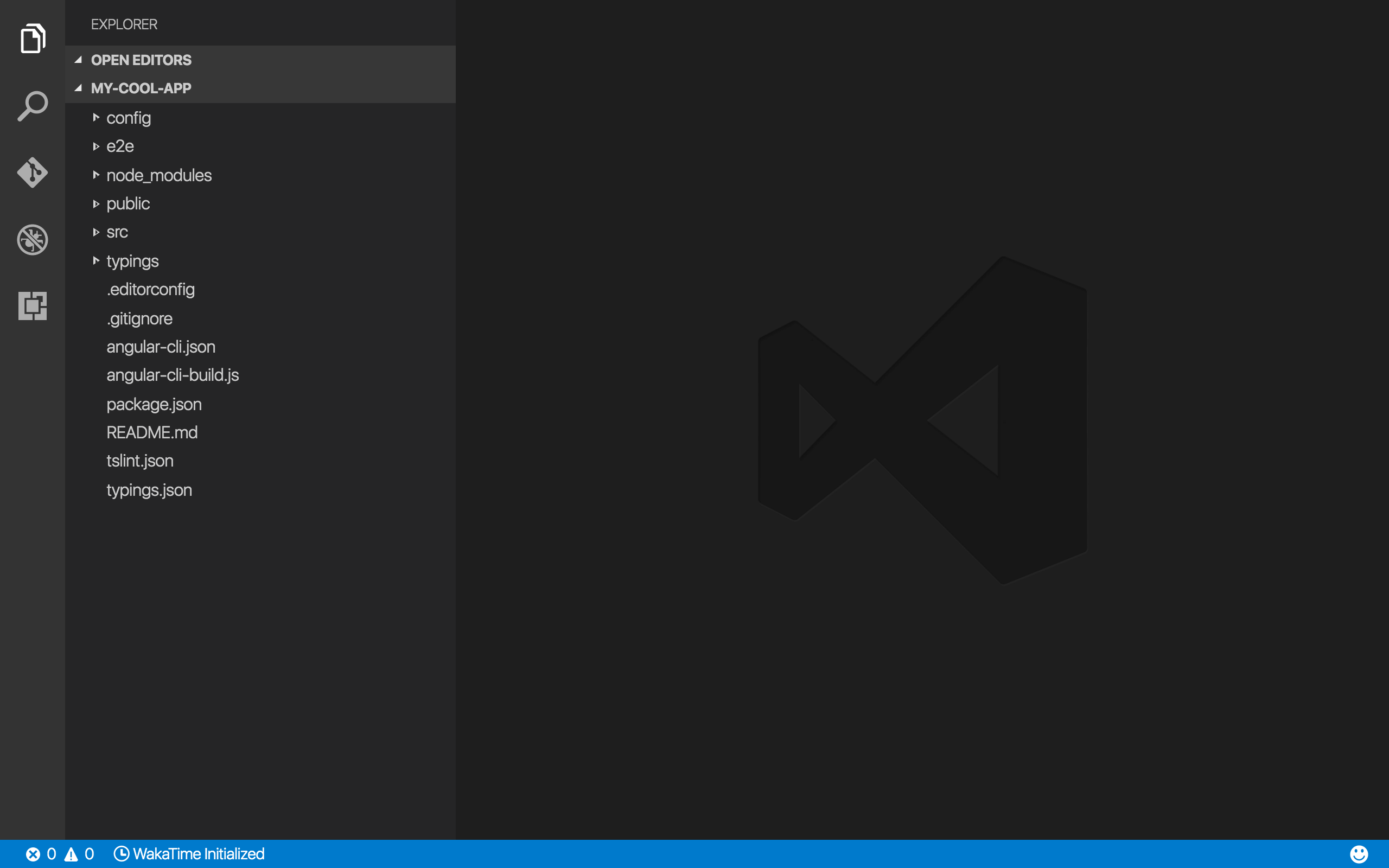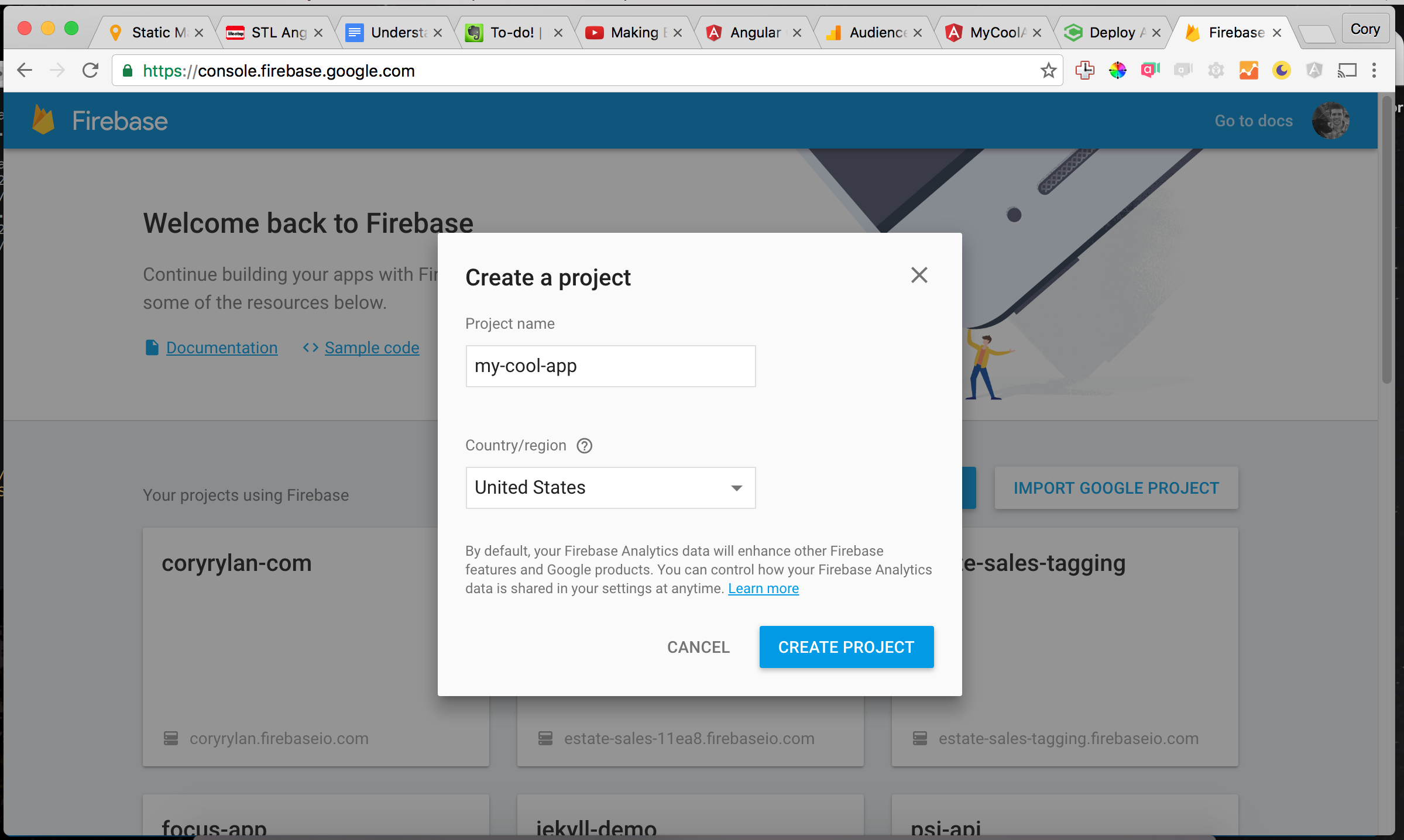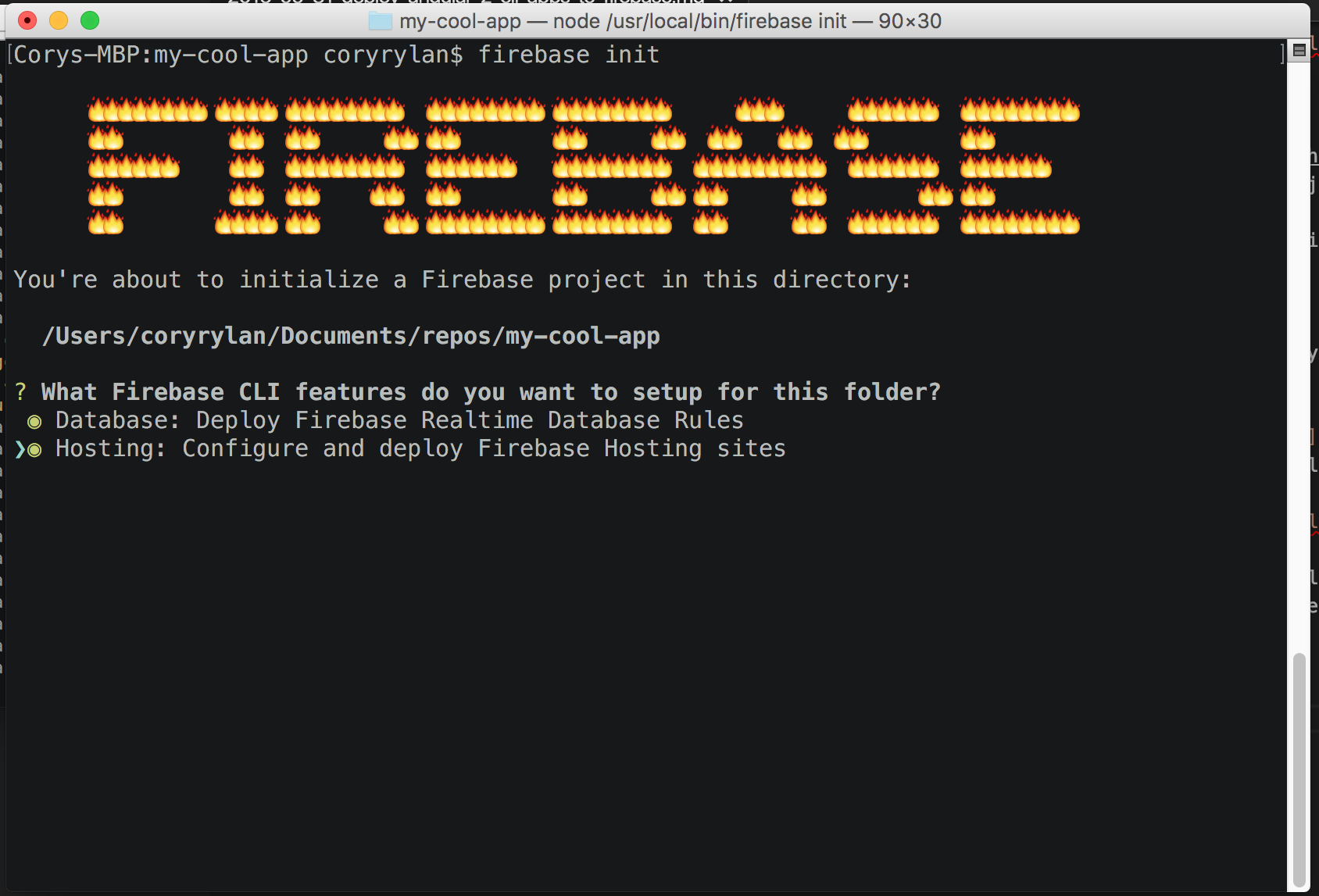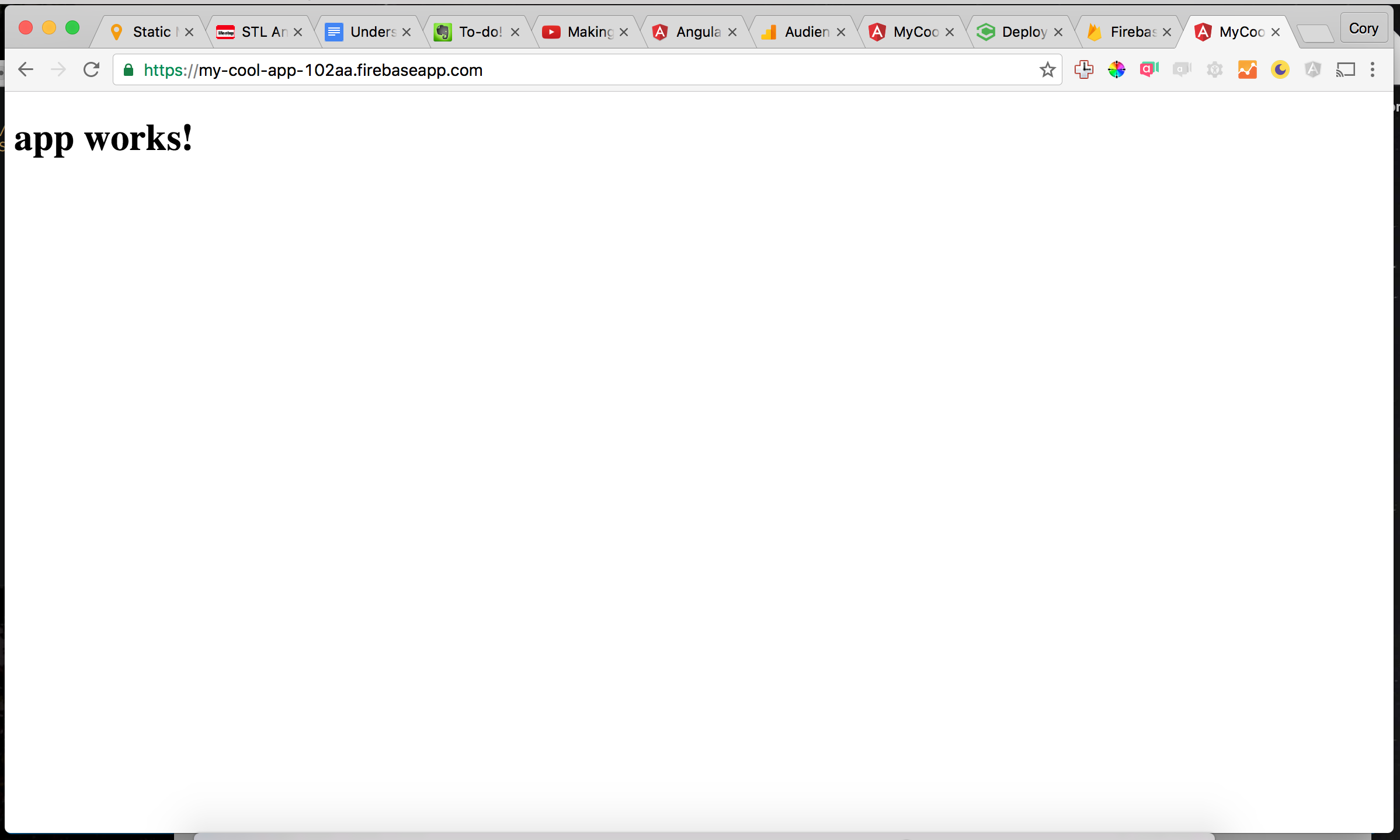Deploy Angular CLI Apps to Firebase
In this post we re going to cover how to get a Angular application up and running and then deploy it to Firebase. First lets cover how to use the Angular CLI to help bootstrap our application's build process.
Angular CLI
The Angular CLI is an officially supported project by the Angular team. You can find more information at https://angular.dev/tools/cli. First we will install the Angular CLI tool. To install we install via NPM running the following command: npm install angular-cli -g. This will install the CLI globally to our machine to help us create new Angular projects.
Once installed we can create a new Angular app by running the following command: ng new my-cool-app. Next open your app in your favorite editor and you should see something similar to this:

Starting the CLI
Now running a command prompt at the root of our project we can run the following command: ng serve. This command will build our project and start a live reload server for development. So if we browse to localhost:4200 we should see the following:

Build for Production
I wont cover all the CLI commands in this post. I recommend checking out the CLI Docs. We will just start with running ng build --prod. This command runs a build for our project but with additional production optimizations such as bundling and minification. Now your project should have adist/ directory. This is where all of our compiled ready to deploy code is located every time we run a build.
Firebase CLI
So now that we have learned how to use the Angular CLI to package up our app for deployment we will use the Firebase CLI to create a live hosting project to deploy to.
First you will want to log into Firebase and go to https://console.firebase.google.com/. Once in the console select "Create New Project". For our project we will name it "my-cool-app".

Now that we have a project created lets go back to the command line. Next we next install the Firebase CLI via NPM. In your console run the following command: npm install -g firebase-tools. Once installed run firebase login to login to your Firebase account.
Deployment Setup
Now that Firebase CLI is installed, at the root of your Angular CLI project run firebase init. This will walk through the steps of setting up your app to be deployable to Firebase Hosting.

Select the Hosting option in the command line. Next select our project my-cool-app that we created earlier. Next it will ask what file to use for the Firebase real time database rules. For now you can just use the default.
The next step is important! The cli will ask what folder to use as the public directory. For our project we want to use the dist/ directory instead of Firebase's default public/ directory. So type in the command line dist.
Next it will ask if this is a single page app and if it should rewrite all urls to index.html. For our app select yes. If it asks to over write the index.html file select no. Now your app is ready for deployment! In the root of your app you should have a new file firebase.json file that helps the Firebase CLI know how to deploy our application. Now run firebase deploy. Firebase will provide domain that you can configure to a custom domain in the console. Now if we open our browser we will see something similar to the following:

Now that we have created an Angular project and deployed it to Firebase I recommend digging into more of the Angular CLI and the Firebase Features.

